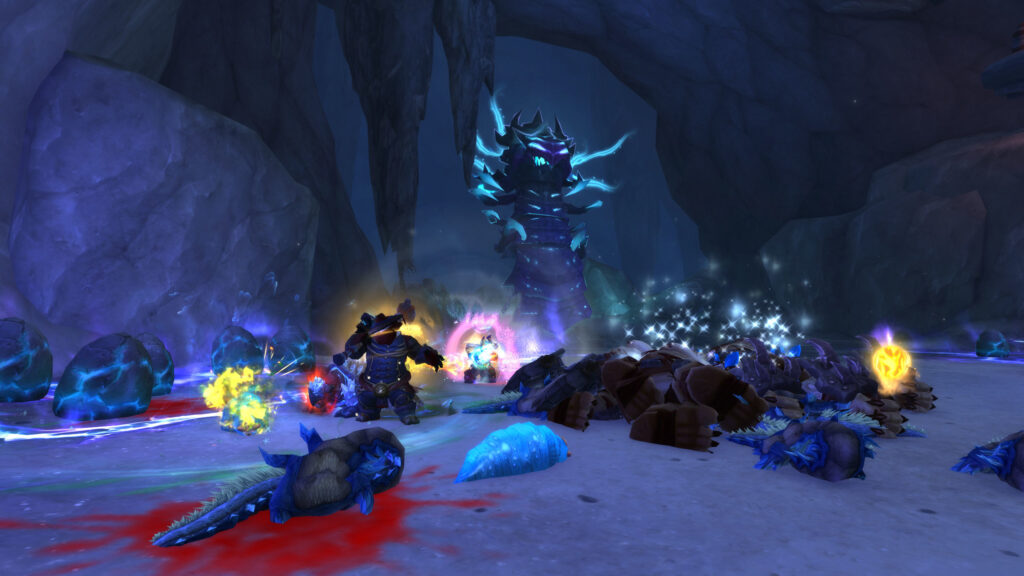Few moments in World of Warcraft are as electrifying—or as brutal—as a raid’s opening week. For competitive guilds, those first few days define legacies. Schedules are cleared, sleep is sacrificed, and every pull counts. Over the years, some raid launches have pushed players to their limits with overtuned bosses, technical chaos, and sheer exhaustion. These openings weren’t just events—they were marathons of endurance, coordination, and passion.
This article revisits the toughest raid launches in WoW history and how guilds rose—or fell—under the pressure of the world-first race.

The Race Begins: Classic’s Chaos
In Classic WoW, raiding was an uncharted frontier. Molten Core launched with little fanfare and no prior testing, leading guilds into a logistical nightmare. Few had the consumables, resistance gear, or knowledge to survive its fiery halls. Communication was primitive, spreadsheets ruled, and strategies evolved mid-fight. Every kill felt like a discovery, every wipe a lesson written in pain. What modern players call “progression” was then pure experimentation.
Victory belonged to patience more than precision.
The Burning Crusade: Kael’thas and the Wall of Coordination
By The Burning Crusade, guilds had matured—but so had raid design. The Tempest Keep: The Eye introduced Kael’thas Sunstrider, a boss whose multi-phase mechanics demanded unmatched synchronization. Coordinating 25 players across weapon management, add control, and timed interrupts tested even the most disciplined groups. Many guilds stalled for weeks before victory. Preparation meant spreadsheets, simulation theorycrafting, and rehearsed rotations long before add-ons tracked them.

Kael’thas wasn’t just a boss—he was a logistical symphony.
Wrath of the Lich King: Ulduar and the Age of Strategy
Ulduar redefined raid openings by introducing hard modes—optional difficulties triggered mid-fight. Guilds had to choose between fast clears and greater rewards. The pressure to innovate strategies on the fly made week one exhilarating and punishing. Bosses like Yogg-Saron and Firefighter Mimiron demanded near-perfect reaction times. The era marked the shift from endurance to intellectual mastery—raiding became chess at 200 actions per minute.
Ulduar’s opening wasn’t about power—it was about genius.
| Expansion | Raid | Boss | Main Challenge |
|---|---|---|---|
| The Burning Crusade | The Eye | Kael’thas Sunstrider | Multi-phase chaos and coordination |
| Wrath of the Lich King | Ulduar | Mimiron (Firefighter) | Complex hard mode triggers |
| Cataclysm | Firelands | Heroic Ragnaros | Endurance and phase management |
| Legion | Tomb of Sargeras | Kil’jaeden | Technical execution under pressure |
| Shadowlands | Sanctum of Domination | Sylvanas Windrunner | Long fight fatigue and coordination |
Firelands: The Return of the Firelord
When Heroic Ragnaros emerged at the end of Cataclysm, he set a new bar for raid openings. The fight introduced a secret final phase that no one saw coming—catching every guild off-guard. Over 500 attempts later, Paragon claimed victory, cementing the encounter as one of the hardest ever designed. Preparation for Firelands required split raids, resource optimization, and sleep deprivation measured in days, not hours.
It wasn’t a raid—it was a trial by fire, literally.
Legion and the Rise of the Race
Legion transformed raid openings into global events. The Tomb of Sargeras and Antorus launches were broadcast live, watched by hundreds of thousands. Bosses like Kil’jaeden and Argus pushed coordination and endurance to cinematic levels. Guilds now operated like professional teams—analyzing logs, streaming practice sessions, and adapting in real-time. The race to world-first became both competition and culture.

The opening week evolved from chaos to spectacle.
Modern Day: Precision Meets Pressure
Today, with Dragonflight and The War Within, Blizzard balances difficulty with watchability. Guilds enter raid openings with world-class preparation: spreadsheets, PTR data, and coaching staff rivaling esports teams. Yet the pressure remains. Even with infinite tools, mistakes still cost everything. It’s proof that no amount of preparation can replace execution under fire.

The game has grown, but the thrill of day-one pulls remains eternal.
Conclusion
From the chaos of Classic to the professional polish of Dragonflight, raid openings have evolved into endurance trials of both mind and body. Guilds prepare for weeks, only to face the unknown when the gates open. These moments define not just expansions, but eras of WoW history. Because for raiders, the true challenge isn’t the boss—it’s the race against time, fatigue, and themselves.
And that’s why the first pull will always be the most exciting moment in Warcraft.
Home
